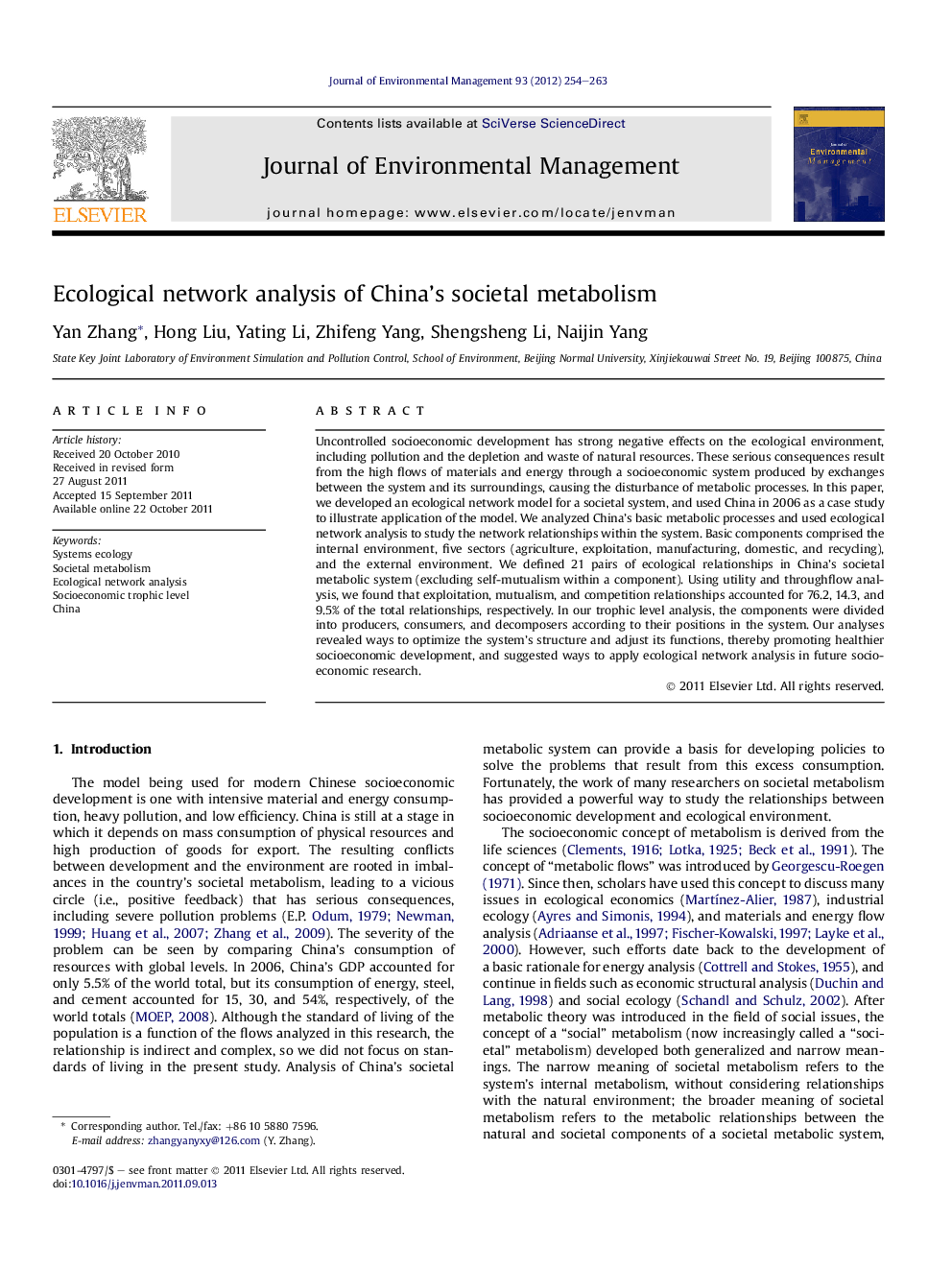| Article ID | Journal | Published Year | Pages | File Type |
|---|---|---|---|---|
| 1056987 | Journal of Environmental Management | 2012 | 10 Pages |
Uncontrolled socioeconomic development has strong negative effects on the ecological environment, including pollution and the depletion and waste of natural resources. These serious consequences result from the high flows of materials and energy through a socioeconomic system produced by exchanges between the system and its surroundings, causing the disturbance of metabolic processes. In this paper, we developed an ecological network model for a societal system, and used China in 2006 as a case study to illustrate application of the model. We analyzed China’s basic metabolic processes and used ecological network analysis to study the network relationships within the system. Basic components comprised the internal environment, five sectors (agriculture, exploitation, manufacturing, domestic, and recycling), and the external environment. We defined 21 pairs of ecological relationships in China’s societal metabolic system (excluding self-mutualism within a component). Using utility and throughflow analysis, we found that exploitation, mutualism, and competition relationships accounted for 76.2, 14.3, and 9.5% of the total relationships, respectively. In our trophic level analysis, the components were divided into producers, consumers, and decomposers according to their positions in the system. Our analyses revealed ways to optimize the system’s structure and adjust its functions, thereby promoting healthier socioeconomic development, and suggested ways to apply ecological network analysis in future socioeconomic research.
Graphical abstractThe metabolic actors within a system can be grouped based on their common metabolic characteristics. For example, societal metabolic actors can be divided into primary (e.g., exploitation and agriculture), advanced (manufacturing), and recycling industries, and the domestic sector. The metabolic processes of a societal system can be summarized as inputs, followed by transformation, recycling, and outputs, as shown in the above Figure. The societal metabolic actors rely on natural resources provided by both the internal and external environments, and produce wastes that are released into the internal and external environments. Figure optionsDownload full-size imageDownload as PowerPoint slideHighlights► We analyzed the basic metabolic processes of China’s socioeconomic system by treating the country as a superorganism. ► We developed an ecological network model for the societal system. ► We analyzed the network structure and relationships within the system using ecological network analysis. ► We determined the trophic levels of key components of China’s societal metabolic system.
